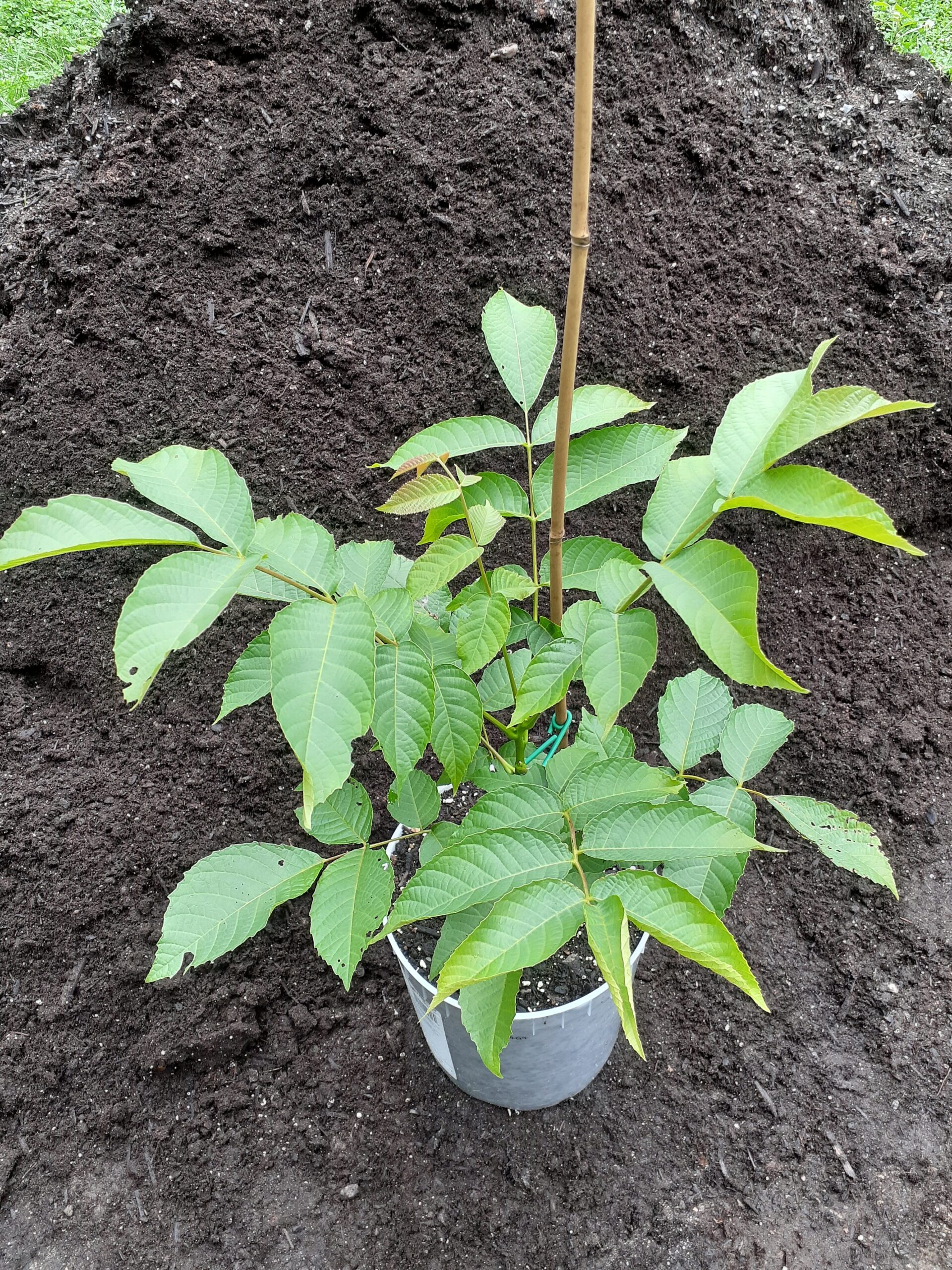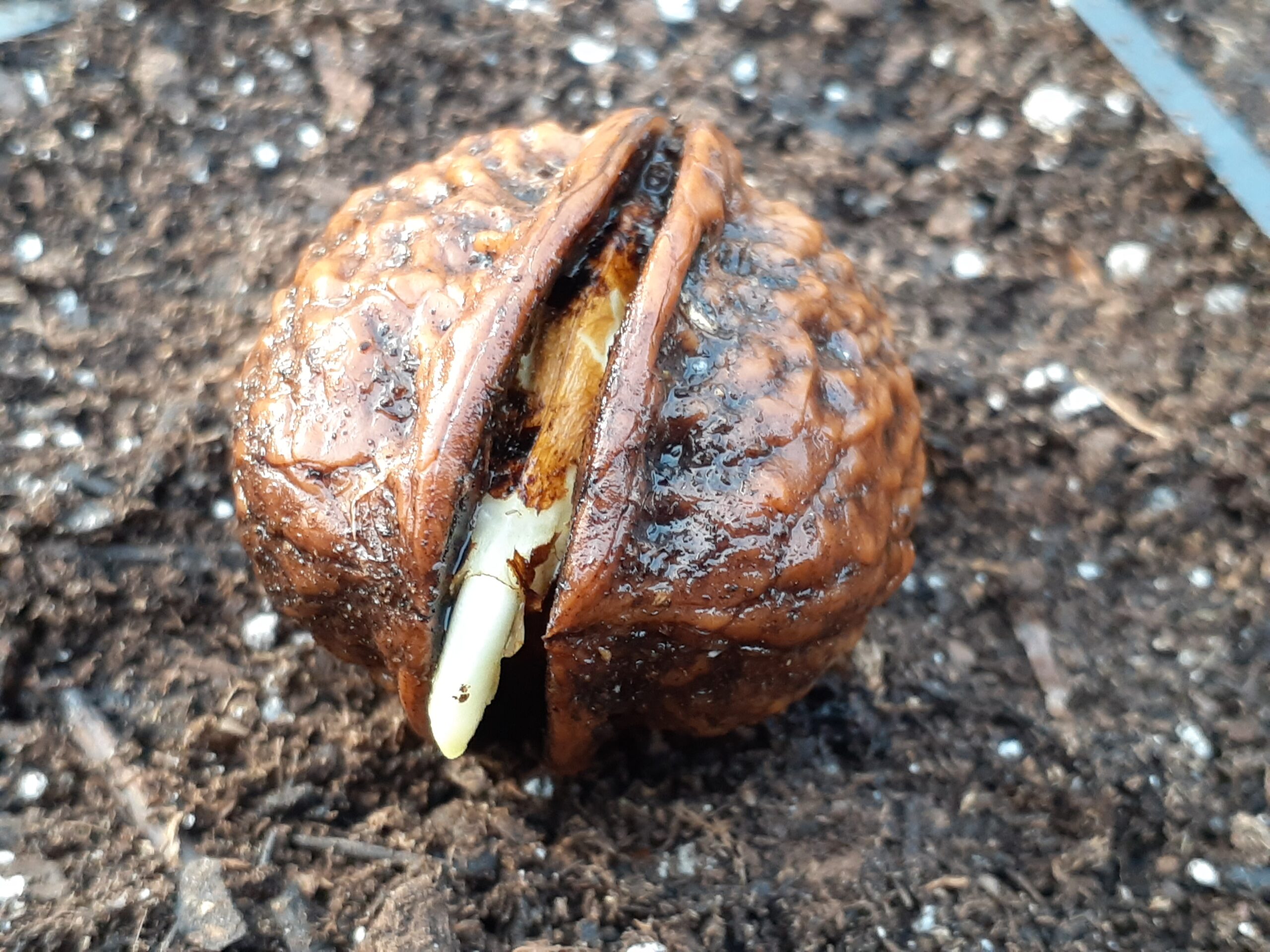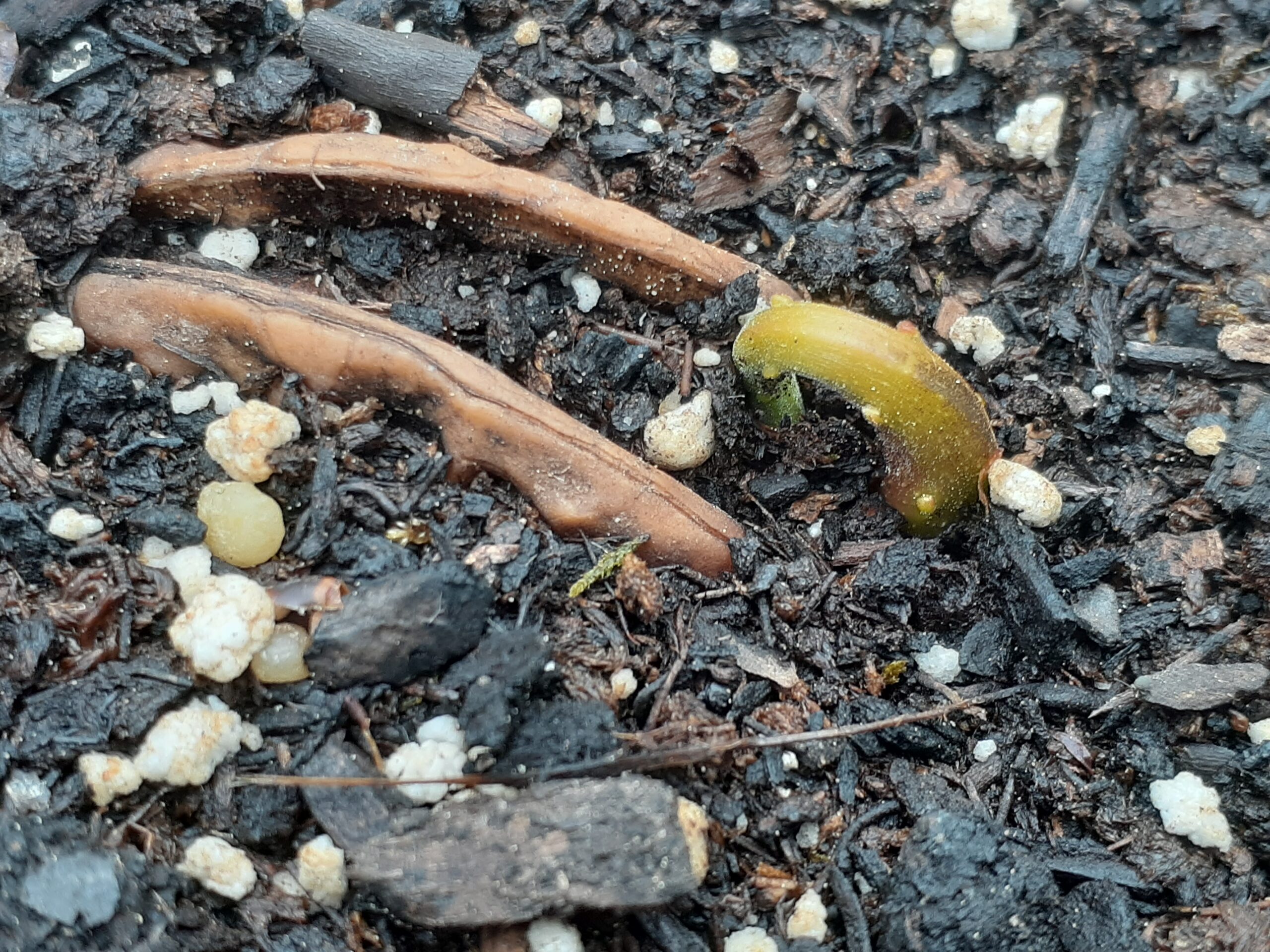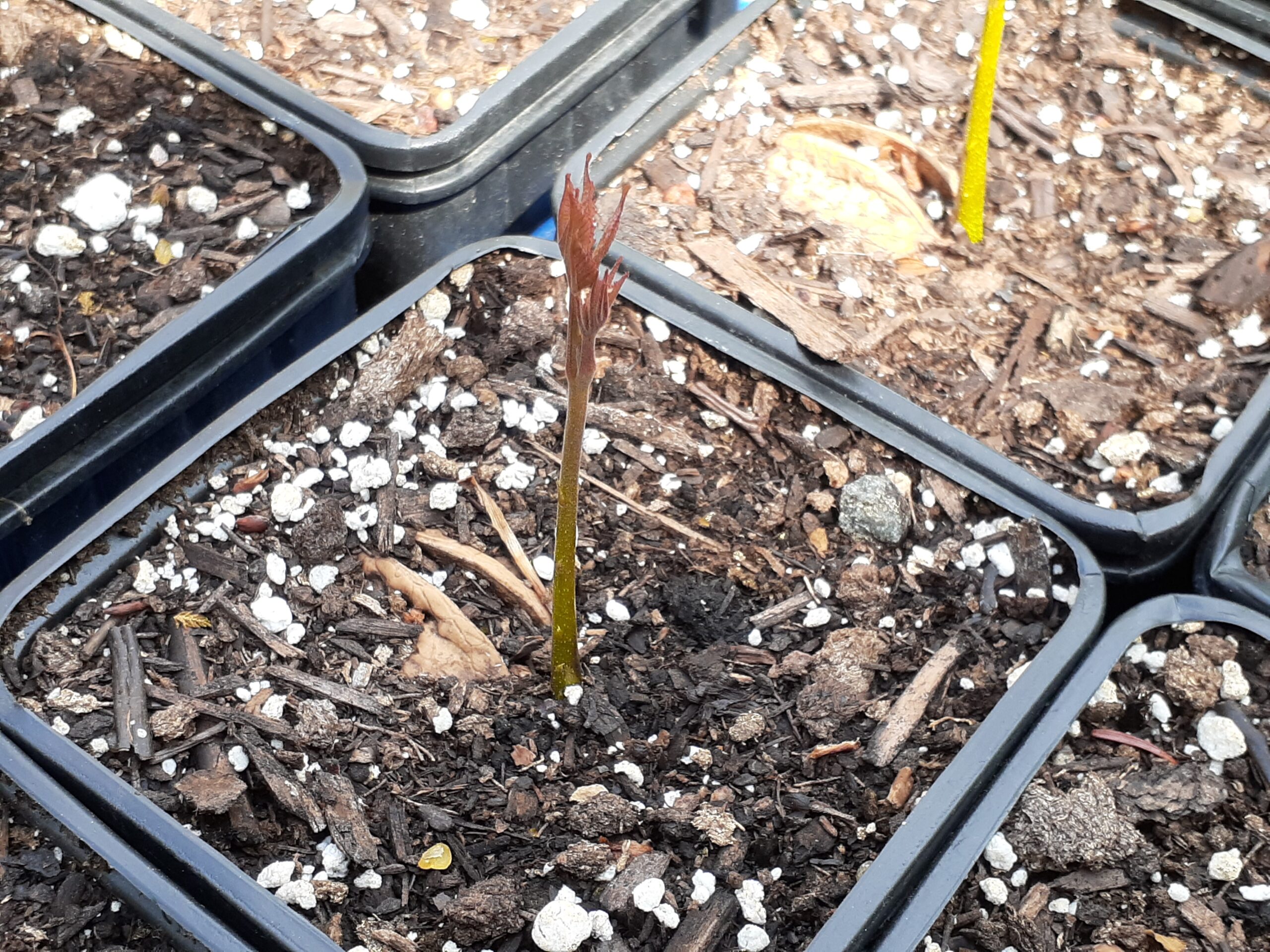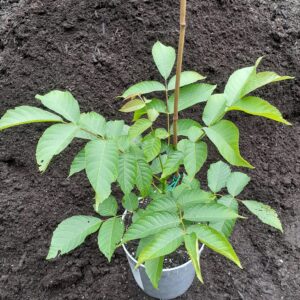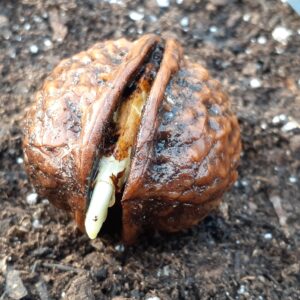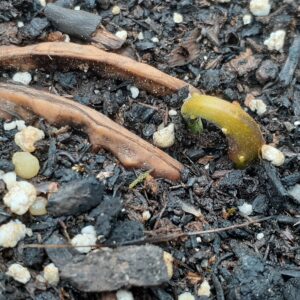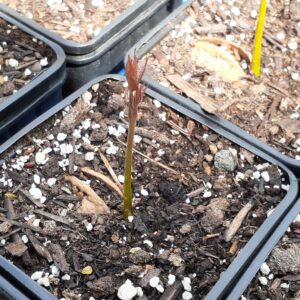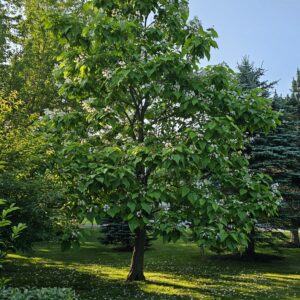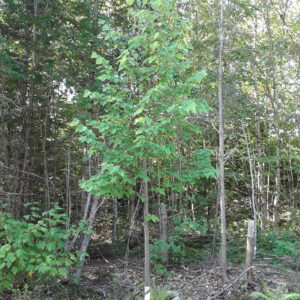English ‘Carpathian’ Walnut
(Common Walnut, Persian Walnut)
Juglans Regia ‘Carpathian’
This variety of the English walnut is not a native of England at all but instead originates eastward of the Carpathian Mountains in Europe and into Asia. It is considered the cold hardiest variety which can be planted in sheltered locations in zone 5. Commercially grown for its superior easy-to-crack nuts but just as welcome in a garden landscape. Will typically begin producing fruit within 10 years. Tree parts and especially roots produce a chemical called juglone that inhibit growth of some plants in the root zone. Male and female flowers are on the same tree and are wind pollinated. Planting two or more trees will improve seed crop quantity through cross pollination. Prune in early fall to avoid sap ‘bleeding’ that will weaken the tree. Can produce hybrid offspring if planted near black walnut or butternut.
Additional information
| Foliage | Deciduous |
|---|---|
| Locale | Native to Asia, Native to Europe |
| Height | Medium (30-60ft) |
| Width | Moderate |
| Form | Round |
| Growth Rate | Moderate |
| Longevity | Long (over 100 years) |
| Hardiness Zones * | 5 |
| Sun Exposure | Full Sun (over 6 hrs), Partial Sun (4 to 6 hrs) |
| Soil Preferences * | Moist, Slightly Alkaline, Well Draining |
| Soil Tolerances | Clay, Dry, Slightly Acidic |
| Other Tolerances | Occasional Drought, Urban Pollution |
| Ornamental Interest | Leaves (shape) |
| Wildlife Value | Birds (fruits/seeds), Large Mammals (fruits/seeds), Small Mammals (fruits/seeds) |
| Human Value | Carpentry (wood), Edible (seed) |
| Seed Collection | Ordered Online |
| Planting Considerations | Allelopathic, Intolerant of Full Shade, Messy Seed Litter |




